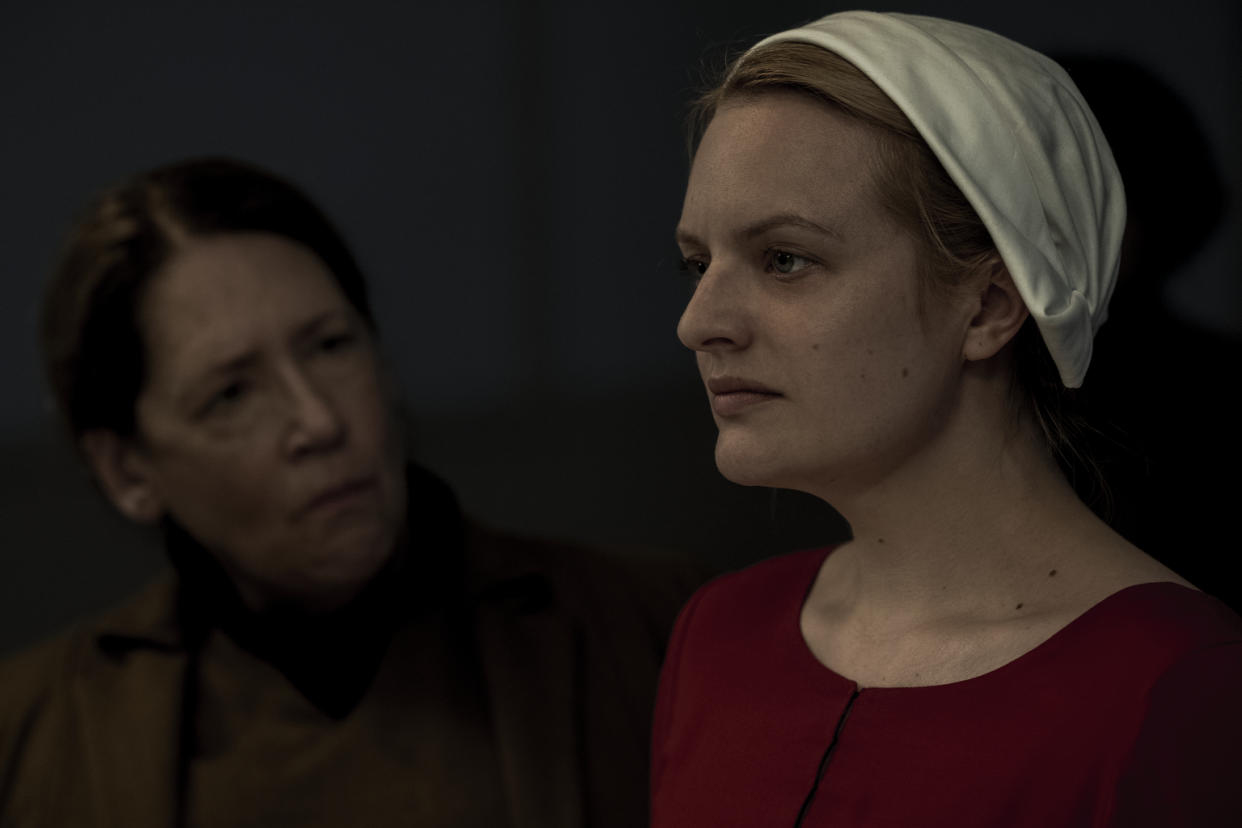'Handmaid's Tale' Season 2 is scarier than Trump Year 1

If you thought the first season of The Handmaid’s Tale was unrelentingly grim, you’re going to love Season 2. The Hulu streamer, starring Elisabeth Moss as the oppressed Offred, ended last year with Offred packed into a van headed who knows where. In the stifling gloom, she intoned a final line from the novel: “I step up into the darkness within, or else the light.” But, come on, you didn’t expect Season 2 to open with Offred stepping into dazzling brightness and the cast of Hair putting flowers in her hair while singing “Let the sunshine in,” did you?
No, the new season — Hulu is premiering two fresh episodes today, with a new one each Wednesday thereafter — opens with the still-pregnant Offred coping in the misogynistic, dystopian world of Gilead as best she can. She’s under the thumb of Ann Dowd’s Aunt Lydia, whose sweetly trilled threats are as delightfully frightening as ever. Indeed, Dowd’s performance is absolutely essential to keeping this show from tipping over into excessive self-seriousness. You’ll notice that whenever Handmaid’s Tale shifts away from Lydia and Offred, and back to the Canadian border and the subplot involving Offred’s husband, Luke (O.T. Fagbenle), and Moira (Samira Wiley), the show becomes deadly drab and dull.
Speaking of drab and dull, the second episode spotlights Alexis Bledel’s Emily, who’s hoisting a pickaxe and working on a chain gang that’s even more onerous than the one Cool Hand Luke labored on. Hoo boy: One shot of Bledel sweating over enforced manual labor and you’ll believe she must be wishing, couldn’t Gilmore Girls creator Amy Sherman-Palladino had found a spot for her on the latter’s acclaimed new lark, The Marvelous Mrs. Maisel?
Season 2 is largely the creation of showrunner Bruce Miller, who has done an impressive job of maintaining — and in some ways, elaborating upon — novelist Margaret Atwood’s atmosphere of dread and oppression. Over the course of six episodes made available for review, we see Offred brought to her lowest, her spirit broken. Yet not for one moment do you think she’ll break. Here it’s Moss who helps sell Offred’s indomitable will in a believable manner. We also meet other new characters played by familiar faces such as Marisa Tomei and Cherry Jones, the latter embodying Offred’s feminist-activist mother.
This season, I especially like the flashbacks to the “normal,” pre-Gilead world. During these glimpses, we witness the slow, steady erosion of rights and freedoms, especially for women. (We see Offred — then known by her real name, June — having to get her husband’s written permission to obtain birth-control pills.) It’s a convincing glimpse into the way a free society slips inexorably toward authoritarianism. These moments are also the ones that ring true most ominously for the situation we all now inhabit. When she wrote her novel in the 1980s, Atwood probably did not intend it to be so prescient. Unluckily for us, she ended up creating a world we now watch as a metaphor that seems to be shading into literal reality. Could someone in the White House please make sure the president doesn’t switch away from Fox News to watch The Handmaid’s Tale? We don’t want to give him any ideas…
The Handmaid’s Tale is streaming now on Hulu.
Read more from Yahoo Entertainment:

